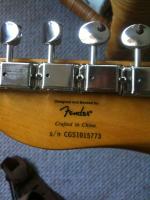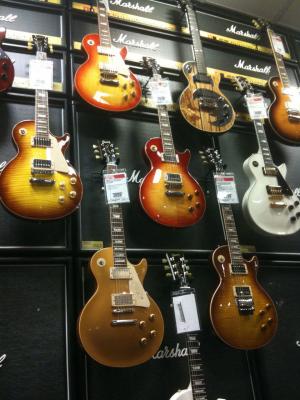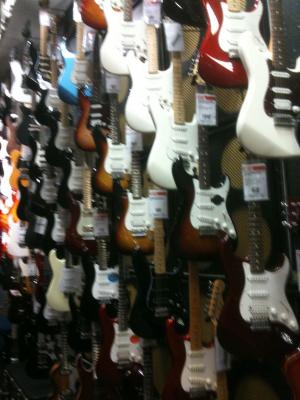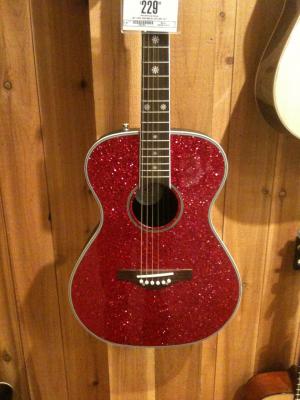Playing acoustic guitar in a band setting comes with a unique set of challenges. Whether you’re playing acoustic or electric guitar in a band, every guitarist has the same basic needs:
1. The need for great tone. “Tone” of course is subjective, but it’s not much fun playing if you think your tone sucks.
2. The need to be able to hear what you’re playing. If you’re being drowned out by the drummer or other musicians, you can keep playing and hope for the best but it’s a major drag when you can’t hear yourself.
3. The need to be in control of your sound. With an acoustic guitar or semi-hollow electric guitar, as volume levels rise, so does the likelihood of feedback. Controlled feedback is good, uncontrollable feedback equals vibe killer. The need for higher volume levels before feedback is one of the reasons the solid body electric guitar was invented.
I play a fair bit of acoustic guitar with The Malarkeys, and I’ve had to adapt to play with drums, bass, accordion, fiddle, and sometimes keyboard. It’s a demanding situation for an acoustic guitar.
Acoustic Guitar Pickup
Until this year, I was playing an Ibanez AW-10CE NT, which has a built-in pickup system that includes an onboard EQ. It has a phase reversal switch to help prevent feedback. It also features a very unusual XLR output jack in addition to a standard ¼” jack. The whole system works very well and the sound is nicely balanced. It works well either through a guitar amp or direct into a PA system.
This year I got another acoustic guitar which is now my main acoustic instrument, a Gibson J45. It features a built-in pickup from L.R. Baggs. There are no tone controls or anything, just a volume wheel discreetly located inside the sound hole. The sound is full and works very well in a band context. The J45 also sounds beautiful on its own.
Amplification
When amplifying an acoustic guitar, there are four main choices.
1. Point a microphone at the guitar and run the signal into a PA system. This is usually the best way to reproduce the truer acoustic sound of the guitar. The drawback is that the player can’t move around; if you step away from the mic your sound drops out and no one will hear you. The technique is also next to impossible if there are other loud musicians playing with you; the microphone will be very susceptible to feedback if the stage volume gets aggressive.
2. Use a built-in or clip-in pickup and send the signal to a PA system. This is a very popular method, particularly if you have a pro sound system and a sound technician running it. If the sound engineer knows what they’re doing, they should be able to provide enough on-stage monitoring so everyone can hear the acoustic guitar, and they can make sure enough signal goes to the front of house so the guitar is in the mix properly. For small gig situations with no sound engineer, this is still a popular choice. One potential drawback is that acoustic guitars can sometimes sound very tinny and thin when amplified this way, so you’ll see some guitarists run their signal into an acoustic guitar preamp or direct box first, and then to the PA. A preamp helps adjust the level the guitar is sending to the PA and usually includes tone-shaping circuitry and/or EQ.
3. Plug the guitar’s pickup into an acoustic guitar amplifier. This can provide a good sound and provide lots of control over your sound. Many amps will have a line out for sending a signal to the PA, and having an amp on stage can act as your personal monitor so you can hear what you’re playing. One downside of this approach is that if you’re switching back and forth between acoustic and electric guitars on the same gig, then you need to bring two amps, really; one for the acoustic and one for the electric, because the electric guitar amp will be voiced differently, and usually include features like overdrive.
4. Plug the guitar into a regular guitar amp, and put a mic on the amp’s speaker to send a signal to the PA. The reason for the mic on the amp speaker is that with many guitar amps, a line out an effects send jack, sends the signal out before it has been processed by the amp’s EQ section. Consequently, you may be hearing a wonderful tone through the amp, but the PA is getting an undoctored sound that can be thin and wimpy. I go with this option most of the time, for a number of reasons. I’ve got a video demonstrating how it sounds on YouTube.
There are many variations on these techniques, and you’ll want to experiment within the parameters of your band, your playing situations, your PA system, and of course your budget.
Preventing Feedback
Some acoustic guitarists will stuff their acoustic guitars full of foam to help prevent feedback. Personally, I’ve never done that, but I would recommend picking up a sound hole cover. They’re inexpensive, and they help a lot. Your guitar will still sound OK acoustically, but you’ll be able to get more amplified volume before feedback occurs.









